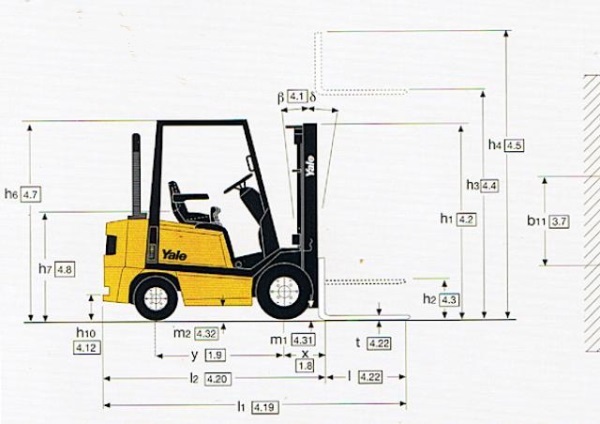Forklift Technical Information
The largest forklift operator training website in the world
![]()
![]()
Complete set of 130 forklift instructor's training slides. £50
Precautions to be observed when handling L.P. Gas
- Position the tank so the liquid propane does not come in contact with the relief valve.
- Make sure the locking pin engages into the cylinder.
- Make sure the valve is closed tightly. (Hand tighten only)
- Store the cylinder outside, in an upright position, in an area where it can be secured and is protected from being struck.
- Put the cylinder down gently. Do not drop, dent or damage.
- Always protect the valve from any damage.
- Avoid contact with liquid propane, as it can cause frostbite.
- Wear protective gloves while making or breaking connections
- Ensure that only qualified persons repair carburetors and fuel supply systems.
- For repairs, use only components that the manufacturer recommends
- Exchange removable cylinders outdoors or in well-ventilated areas, away from sources of ignition.
- Close the valve before breaking connections.
Procedure for changing propane (LPB) cylinders
- Wear eye protection and insulated, loose fitting gloves such as leather (dry) or insulated neoprene.
- Close the valve on the cylinder.
- Run the engine until it stops. This ensures that the connection hose is empty.
- Shut off the engine.
- Open the connecting nut and inspect valves for leaking.
- Disconnect the hose.
- Disconnect the holding straps.
- Remove the empty cylinder.
- Replace with a full cylinder in the proper position.
- Connect the holding straps.
- Tighten the connecting nut (wiggle hose).
- Open the valve on the cylinder slowly and check for leaks. Use solution of soap and water
- Smell--listen--look.
- If the valve leaks: 1) Tighten the nut and continue 2) Change the cylinder. 3) Seek guidance from a Supervisor
- Open the valve fully (slowly).
- Check that the hose is turned inward.
- Secure the hose downward.
- Secure the cylinder.
- Start the engine and resume operation
Do not.................................
- Use metal tools when changing a cylinder.
- Let the cylinder get too hot.
- Use matches or a flame to check for leaks. Use soap or a leak detector